on Polestar's Platform, Software-Defined Vehicles & EV charging in the Winter
On developing the Polestar 5 platform. . .the JLR-NVIDIA collaboration. . .Lotus’s new operation. . .EV charging in the winter. . . alternative powertrain stats. . .an EV door handle. . . BlackBerry on cybersecurity. . .the cost of dependability
#electronics
Polestar Develops New All-Aluminum Platform
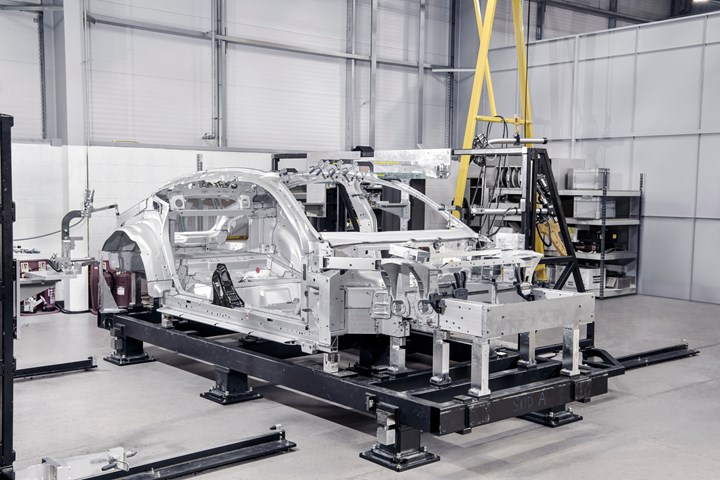
At its R&D facility in the U.K. Polestar developed a bonded aluminum platform for its forthcoming Polestar 5. (Image: Polestar)
New vehicle platforms are important because they tend to be around for a long time, forming the basis of a panoply of other vehicles.
Polestar, the Sweden-based company that was founded by Volvo Cars and Geely Holding in 2017, a company that makes electric premium vehicles*, has announced the development of a new platform.
It was developed for the Polestar 5, which will be a four-door GT. Odds are it will be used for things that may have four doors but which aren’t cars.
F1 Competence
Polestar went big on this development. They did the engineering in the Midlands of England, a global center of Formula One vehicle competence.
The development team for the platform included 280 engineers who had F1, sports car, or low-volume vehicle engineering experience.
And notably, this new platform is all-aluminum.
One of the reasons why the team went for aluminum rather than steel is to achieve mass reduction. Less mass to move means less energy expended—which is important for any vehicle, especially one that is battery-powered.
Yes, safety is a key consideration. (Remember: Volvo is a parent.)
The Details
We were interested in learning more about this “bespoke, bonded aluminum platform,” so we asked.
And Steve Swift, director of vehicle engineering at Polestar, answered.
- What is it bonded with?
- “We use a heat-cured epoxy for the bonding.”
- Is it only bonded, or is welding used, too?
- “There is no welding in the main chassis structure.”
- What is the torsional rigidity?
- “The rigidity is 47 kNm/deg. The Polestar 5 has a very long wheelbase, so the stiffness per unit length of the car is fantastic.”
- The vehicle is said to have had its body and platform developed in unison, thereby helping speed development. Can you clarify?
- “Historically, many of the vehicles that use this aluminum technology deploy panels, in particular the exterior ones, primarily as cosmetic parts. We’ve designed everything—body and chassis—simultaneously, and even used a very wide variety of aluminum grades. As a result of that range, every panel on the car makes a contribution to the structural performance. That, in turn, makes for a more mass-efficient structure. This simultaneous engineering also allows us to design the manufacturing consistence and quality capability that will be required in this market segment into the vehicle and components, as opposed to refitting or adjusting for perfection on an assembly line.”
- Speaking of the assembly line, where will the Polestar 5 be built?
- “It is too early to say which plant(s) we will build at.”
*Polestar built the Polestar 1 between 2019 and 2021. It was a low-volume, carbon fiber bodied, hybrid GT that produced 609 hp. So that was electrified, not electric. At present there is the Polestar 2, a fully electric vehicle. This year the Polestar 3, a fully electric SUV will launch. So with the Polestar 1 no longer in production, Polestar is now an all-electric brand.
///
JLR, NVIDIA, TOPS & OTA
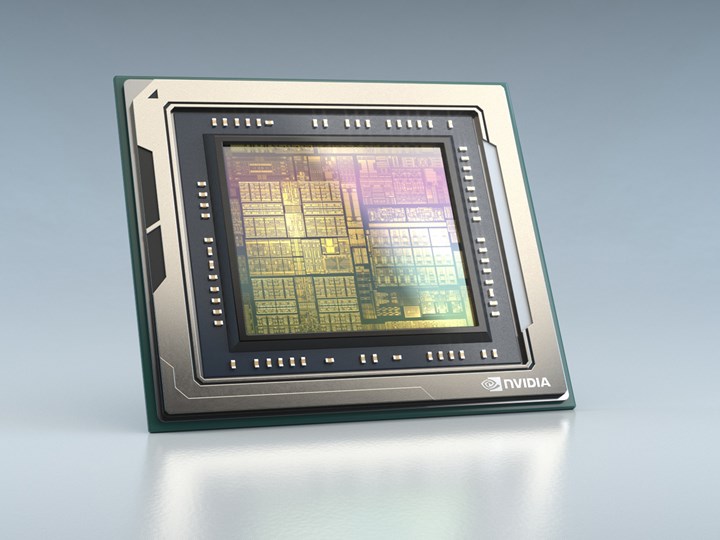
NVIDIA Orion can perform 254-trillion operations per second. It will be central to JLR’s new electrical architecture. (Image: NVIDIA)
While on the subject of platforms. . .
But in this case, architecture. As in the electrical architecture of a vehicle.
Danny Shapiro, vice president, Automotive, NVIDIA, says that there is a shift to “software-defined architectures.”
A simple way to think about this is in the context of a smartphone.
Over time, as the number of apps increases, the smartphone is not only upgraded but it becomes more capable.
This is what the goal is for vehicles.
Shapiro notes, however, that the traditional electrical architectures in vehicles today don’t lend themselves to this approach. There is a need, he says, for “high-performance centralized computing.”
As NVIDIA produces systems-on-a-chip (SoC) such as DRIVE Orin, which performs 254 TOPS—as in “trillions of operations per second”—and can be used as a central computer for smart vehicles, you’d expect Shapiro to say that.
Partner, Not Supplier
But then there’s Francois Dossa, executive director of Strategy, Jaguar Land Rover (JLR), who says that starting in 2025 all new JLR vehicles will have a new electrical architecture that it is developing in partnership with NVIDIA. Dossa emphasizes that “NVIDIA is not a supplier. We are going to co-develop the products and features.”
The JLR vehicles will feature a full-stack solution based on NVIDIA DRIVE Hyperion (Shapiro says to think of this as the central nervous system) and DRIVE Orin (the brain).
The JLR vehicles will offer a range of active safety, automated driving (starting at Level 2+ and, Dossa says, going to Level 3), occupant and driver monitoring, and more. Over-the-air (OTA) updates will be used to make the vehicles more capable with time.
“These vehicles will be able to do things we haven’t even thought about,” Shapiro says.
Huh?
He explains that when the iPhone first came out there were a number of apps, which were great, but “now there are so many, it’s crazy.”
Similarly, between now and 2025 there is the opportunity to do much more development on the JLR system, so there is a likelihood that there will be an increase in functionality.
Shapiro: “The age of fixed-function devices is over.” That includes vehicles.
///
Another Track for Lotus
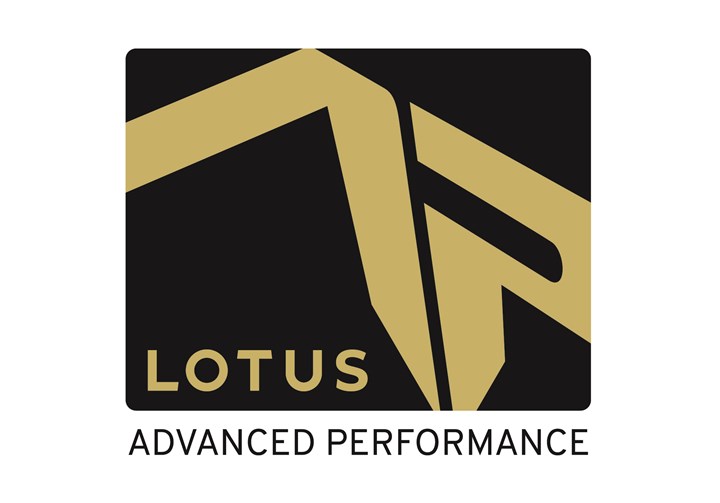
Lotus is working to leverage its assets with this new brand within the Group. (Image: Lotus)
Lotus Cars was founded in 1948 by Colin Chapman. Its race vehicles are legendary. Like many small builders, Lotus through the years has had financials such that ownership changes of the British builder have been frequent. (GM owned the company from 1986 to 1993.)
Now Lotus Group is part of Geely Automotive.
Last week we looked at Lynk & Co’s membership approach to cars. It, too, is part of Geely.
The point of that examination—like this one—was to point out different approaches to the industry.
While Lotus has been, and will continue to be, in the business of building and selling cars like the forthcoming Emira and Evija, and while Lotus Engineering will continue to provide consultancy services to OEMs and Tier Ones, someone at the company recognized the power of the brand.
A New Channel
So Lotus Advanced Performance has been established.
This seems as though it is going to be different from approaches other OEMs have taken regarding performance extensions.
Yes, there will be cars.
But they’re talking about halo projects (“ultra-exclusive and unique vehicles”), limited editions (“exclusive high-spec and highly desirable versions”) and motorsports (“lightweight competition cars,” starting with the Emira GT4).
But there will also be experiences (including unspecified “’money can’t buy’ opportunities all around the world”) and a Lotus driving academy.
Transformation
Here’s the thing.
While many OEMs are now talking about transforming themselves into “mobility service providers,” Lotus is working to transform itself from “a UK sports car company to a global performance car business and brand.”
Arguably, with the fame of its racing and notable engineering developments like the aluminum Elise (which became the basis for the first Teslas) it already accomplished that goal.
Except now they’re probably thinking that it is possible to make it consistently profitable.
///
Something to Make EV Non-Enthusiasts Happy
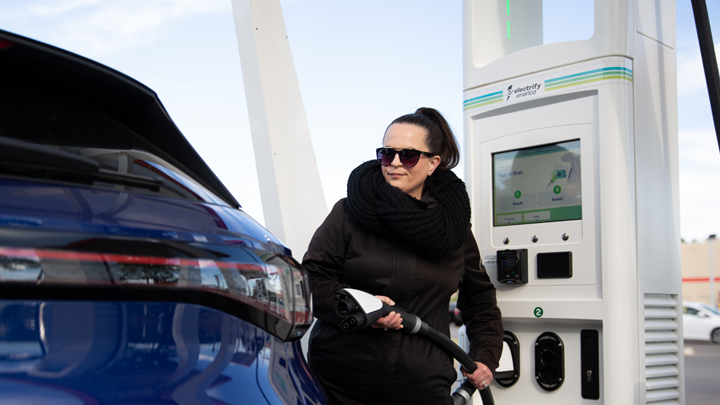
When it is cold outside, batteries don’t perform quite as well as they do when it is warm, and charging isn’t what it otherwise is, either. (Image: Electrify America)
In the Northern Hemisphere, there is more winter to come. It officially ends on March 20.
So this means that the cold weather is still something that will need to be dealt with for a few more weeks.
Numbers from the U.S. Department of Energy have it that fuel economy is reduced for vehicles in the cold:
- Gasoline vehicles and hybrids have an average fuel economy decrease of from 15 to 24%
- Battery electric vehicles can have a loss of energy of some 39%
What is all the more surprising about these numbers is that although they are calculated by the DoE, they came to our attention from Electrify America, the company that is establishing an extensive public charging network.
Electrify America also provides some additional information about EVs in winter. . . .
It Can Take Longer to Charge
The vehicle controls the rate of charging, not the charger. So to avoid stressing the battery, the vehicle’s software reduces the amount of power that is being taken on when it is cold.
The Idaho National Lab ran a study of charging at 77°F and at 32°F. A battery at 32° took in 36% less energy than a battery at 76° during the same amount of time.
Temperature Affects Range
As there are lots of EVs (per capita) in Norway—according to the Norwegian Road Traffic Information Council, 83.7% of new vehicle sales in the country this past January were electric—and as it is often chilly there—according to weather-atlas.com, the average high in January is 28.8°F and the average low is 19.8°F—there is research there on what the cold does to range. The Norwegian Automobile Federation found that cold temperatures overnight can result in someone climbing into their fully charged car and discover an average range reduction of 20%.
But lest people in gasoline-powered cars get too smug, there is still that decrease in mileage when the temps are cold. Perhaps not as great a falloff as in EVs, but a double-digit decrease (as much as 24% during 3- to 4-mile trips according to the U.S. DoE).
However, according to the American Petroleum Institute, the average fill-up takes just two minutes. Even one of the faster-charging vehicles that you can buy right now, a Hyundai IONIQ 5, goes from 10 to 80% of charge with an 800-volt charger in 18 minutes. When it is 32° or lower, the difference between two minutes and 18 minutes is a whole lot longer than clock-time.
///
Interesting Alternative Vehicle Stats
The numbers are surprisingly large.
As in nearly 12% of all vehicles sold globally in 2021 are powered fully or in part by electricity. That according to Inovev.
There were:
- 4,548,627 battery electric vehicles
- 1,780,162 plug-in hybrids
- 2,971,308 full hybrids
Consider this: the total number of hybrids is 4,751,470. Hybrids, of course, have ICEs, so there are still plenty of engines being built (to say nothing of the 88% of the vehicles being produced that aren’t powered fully or in part by electricity).
But there were only 202,843 fewer full battery electric vehicles sold than hybrids and given the number of investments announced by global OEMs in things like battery plants—not ICE plants—you know that the delta is likely to be reversed when the numbers for this year come in.
Also notable is how the different types of alternative powertrain each have one market where they are bigger than the other types.
- In China: Battery electric (2,751,755)
- In Europe: Plug-in hybrid (961,756)
- In Japan: Full hybrid (857,540)
In the U.S. market BEVs are 4%, PHEVs 1% and full hybrids 7%.
(As for the hybrids: remember when people scoffed at the Prius? Seems that that hybrid play paid off. Including both full and plug-in hybrids, Toyota and Lexus brands, in 2021 in the U.S. sold 581,068 hybrids. To put that in context, that is greater than the number of Cadillacs (118,310) and Buicks (179,799) combined (298,109); greater than the number of GMCs sold in 2021 (482,437); and greater than Chrysler (115,004), Dodge (215,724), Fiat (2,374) and Alfa Romeo (18,250) combined (351,352).)
///
A Different EV Door Handle Execution
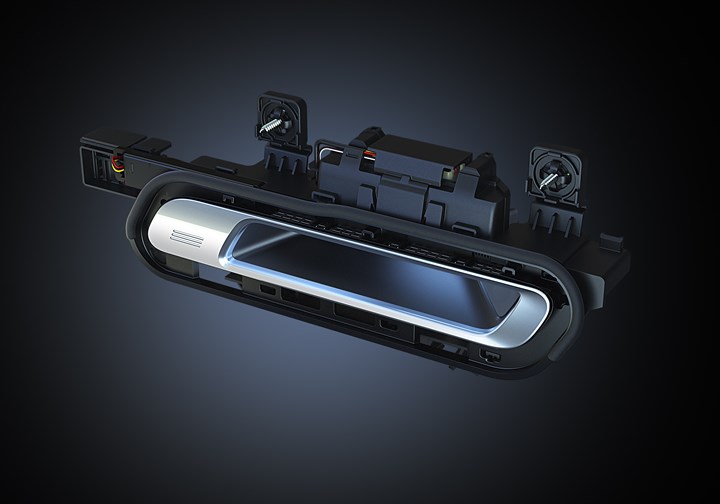
Door handle module developed for the BMW iX. (Image: Huf)
It is a matter of aerodynamics.
The surface of an object shouldn’t have things on it that might inhibit the flow of air and therefore cause drag, miniscule though it may be.
Like the door handles on a vehicle.
So whether it is a Lucid Air or a Tesla Model S you’ll see that the door handles are essentially flush with the surface.
The handle pops out for use.
What About Winter?
But there could be a question regarding the functionality of this approach where ice storms can occur.
You come out to your car and see a nice layer of frozen condensation coating your vehicle.
It is one thing to take an ice scraper to the windshield.
It would be entirely another to take it to the body side.
BMW has taken another approach for the handles for its iX battery electric SUV.
There is a flush surface. . .with an illuminated recess.
It is a matter of reaching in and touching a soft surface that causes door actuation.
The handle was developed by Huf.
Battery Dead?
But what happens if the battery is dead?
There is a mechanical backup. A key is housed in the fob. A locking cylinder in the recess is engaged, which allows the opening of a flap providing access to a Bowden cable that is pulled to open the door.
In the case of an accident, a control unit sends a command to the latch so that there is ready access to the cable.
Here’s something to think about:
According to the U.S. Department of Transportation, Federal Highway Administration, “Over 70 percent of the nation’s roads are located in snowy regions, which receive more than five inches (or 13 cm) average snowfall annually. Nearly 70 percent of the U.S. population lives in these snowy regions.”
Yes, that ice-covered door handle is a non-trivial issue in lots of places in the U.S.
///
Scary Cyber
The “BlackBerry 2022 Threat Report” was released this week.*
And the threats it details are of a cyber variety.
Some comments in the document ought to give everyone who uses a digital device—computer, phone, vehicle, etc.—some pause. Serious pause.
Like:
“When it comes to cyberattacks, there is zero immunity.”
And:
“With malicious hacking attempts occurring every 39 seconds, an organization will exhaust itself relying on reactive security measures.” (Better get proactive.)
And in the commercial space:
“BlackBerry threat researchers discovered SMBs [small and midsize businesses] averaging 11 to 13 threats per device. . . .”
And:
“Over 70% of SMBs have suffered from cyberattacks, according to a study by the Ponemon Institute. Of those attacked, 60% go out of business within six months.”
Here’s a not-so-fun fact about the “cloud” that everyone is talking about:
“Threat actors are increasingly likely to use legitimate cloud providers for hosting. This allows the malware operators to conceal their traffic from monitoring systems, which make the task of automated blocking trickier.”
Management has to realize where the responsibility resides for dealing with these issues:
“The real problem is that current security approaches are unsustainable because they are inherently reactive and unrealistic. A human resources employee responsible for examining resumes all day should not be expected to know when a document is weaponized, and avoid opening it.” Nor is it Marge in accounting or Bob in supply chain.
The BlackBerry report looks at connected vehicles, too, and what is going on in that space.
As in:
“An entire field known as adversarial learning has emerged as a threat to all products employing predictive algorithms. The primary goal of this field is to discover ways neural networks can be taught to fool other predictive algorithms by subtly changing input data. As an example, adversarial algorithms have been used to determine how to apply small patches of tape to a stop sign to render it invisible to classification algorithms.”
Tape.
Two things that need to be kept in mind:
- “The vehicle is only one component in the connected vehicle network. Other systems in the connected vehicle network include charging infrastructure, connected intersections, and even route finding.”
- “From a security perspective, it is important to remember one simple truism: People will trade security for convenience.”
When Microsoft Exchange servers, Colonial Pipeline, AXA and others were hacked last year, it ought to give one pause vis-à-vis Level 4 and Level 5 autonomy.
//
*It seems the “Threat Report” has a fan base. The authors write:
“. . .readers expecting our annual breakdown of the top 10 malware attacks witnesses by BlackBerry over the past year will not be disappointed. Nor will those who look forward to our incident response (IR) year in review, annual cybersecurity legislative updates, and near-term predictions. Many of the sections our readers have come to enjoy from previous BlackBerry threat reports have returned.”
///
The Cost of Dependability

The Chevy Cruze. It went out of production in the U.S. market in 2019. (Image: Chevrolet)
The results of the J.D. Power 2022 U.S. Vehicle Dependability Study (VDS) were released last week. The VDS looks that the number of reported problems with vehicles during the first three years of ownership.
Which means that the results are for model year 2019 vehicles.
The study looks at 184 specific problem areas within nine vehicle categories: climate, driving assistance, driving experience, exterior, features/controls/displays, infotainment, interior, powertrain, and seats.
The metric used is “problems per 100 vehicles.” The lower the number, the better.
So for marques, Kia is number one, with 145 PP100.
Industry average is 192 PP100.
The highest-ranking premium brand is Genesis, at 155 PP100.
The VDS also looks at reliability by category such as Compact Car, Midsize SUV and Minivan.
And it has the overall “Most Dependable Model”: the Porsche 911.
VDA Looked at From Another Perspective
James Davies, founder and CEO of We Predict, a firm that processes Big Data and deploys machine learning and predictive analytics, says that VDS doesn’t tell the whole story about reliability.
The firm, which obtains data about vehicle service from thousands repair centers and dealer ops, has calculated the cost of service for the three years the vehicles have been in service.
And the narrative is somewhat different.
For example, the 2019 Porsche 911? We Predict has calculated that it cost $3,538.85 over the timeframe, paid by the OEM or the owner. There are, Davies says, 311 vehicles that are less expensive to maintain during that same period.
But that’s a Porsche. What about something more attainable?
Like the Toyota Corolla, which is at the top of the VDA in the Compact Car category.
It is followed by the Chevrolet Cruze and the Hyundai Elantra.
Davies and his colleagues calculated that the service and warranty costs (e.g., maintenance, unplanned repairs, service campaigns, diagnostics, warranty and recall fixes) for the three vehicles over the 36-month period are:
- Corolla: $713.91
- Cruze: $277.99
- Elantra: $551.83
Which is to say, in effect, that dependability may (a) be a relative thing or (b) comes at a cost.
(Here’s something that may be too bad: the Cruze went out of production in the U.S. in 2019.)
RELATED CONTENT
-
The U.S. Military Finds New Roads: Fuel Cell Powered Pickups
While it seems that fuel efficiency as related to the U.S. federal government is all about light duty vehicles, that’s far from being the case.
-
Electrically Improving Powertrains
The good news about downsized powertrains is that they can provide greatly improved fuel efficiency compared to larger engines. The not-so-good news for many drivers of cars with these smaller engines under the hood is that they can lack performance.
-
on lots of electric trucks. . .Grand Highlander. . .atomically analyzing additive. . .geometric designs. . .Dodge Hornet. . .
EVs slowdown. . .Ram’s latest in electricity. . .the Grand Highlander is. . .additive at the atomic level. . .advanced—and retro—designs. . .the Dodge Hornet. . .Rimac in reverse. . .


.jpg;width=70;height=70;mode=crop)






